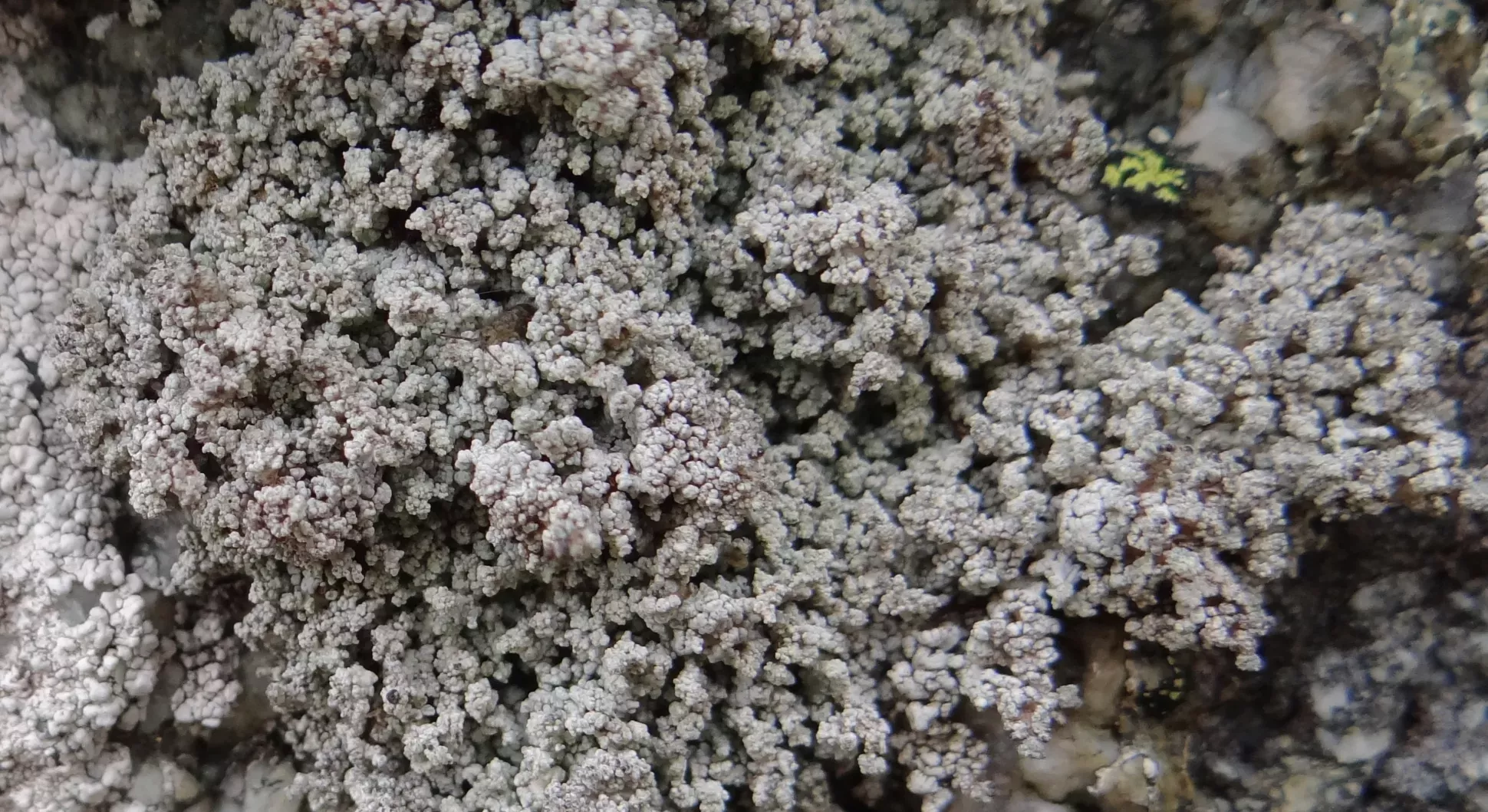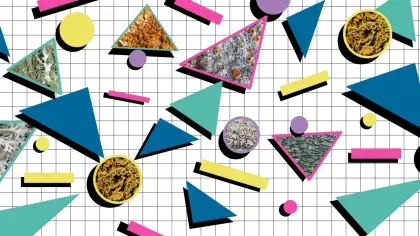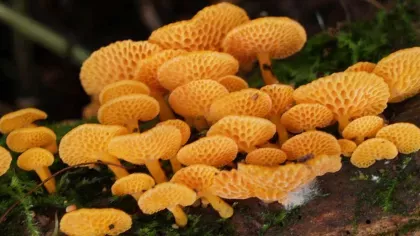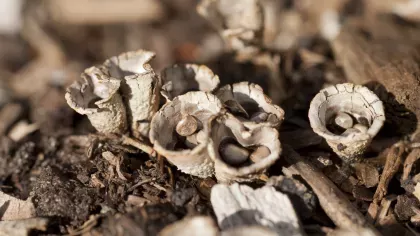24 June 2022
Lichen Adventurer: Elke Mackenzie
Discover the life and incredible adventures of Elke Mackenzie, who improved our understanding of lichens while proudly embracing her identity.

We see lichens every day, almost without realising. On our roofs, trees, and even under our feet on the pavement. They can grow on almost every surface, in almost every environment on the planet. Most of the time, we don’t pay them any attention at all.
Fortunately, Elke Mackenzie did.
As a lichenologist, she took part in a secret war expedition, discovered a unique new species of lichen, and even scuba-dived off the coast of Antarctica.
But outside of her scientific pursuits, Elke’s identity as a trans woman brought her career to an abrupt end and halted her lifelong passion project.
This Pride Month, we’re celebrating the life of this trail-blazing, globe-trotting scientist.
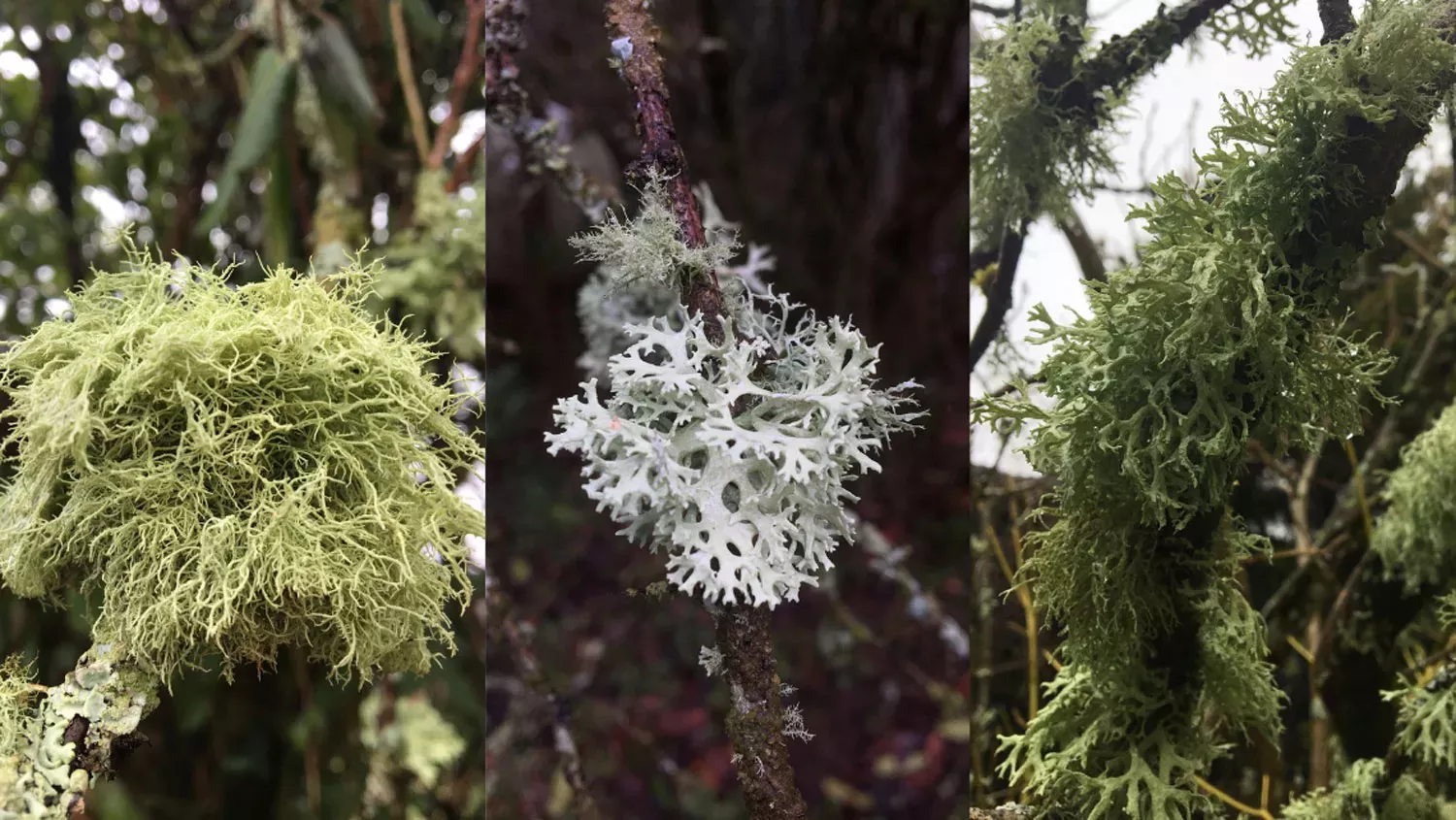
There’s nothing like a lichen
To understand Elke’s passion for lichens, we need to understand what exactly they are.
For years, the scientific consensus was that lichen were plants.
But in 1867, Swiss botanist Simon Schwendener hypothesised that lichen was not just one organism, but a mutual interaction between two separate organisms, a fungi and an algae.
At the time, Schwendener’s ‘dual hypothesis’ wasn’t accepted by the wider scientific community, but as microscopic techniques improved, the evidence showed he was correct.
Lichens are formed by at least two organisms belonging to different kingdoms and living together in what is known as symbiosis. Lichens contain at least one alga (or a cyanobacteria, a type of bacteria that can photosynthesize) and a fungus.
What does each party get from this living-together arrangement? The fungus can feed on the carbohydrates that the algae produce through photosynthesis. In return, the algae get a safe home, protected from the elements, as well as access to water and nutrients that the fungus absorbs.
By working together, it allows the two species to thrive in harsh environments that they couldn’t alone.
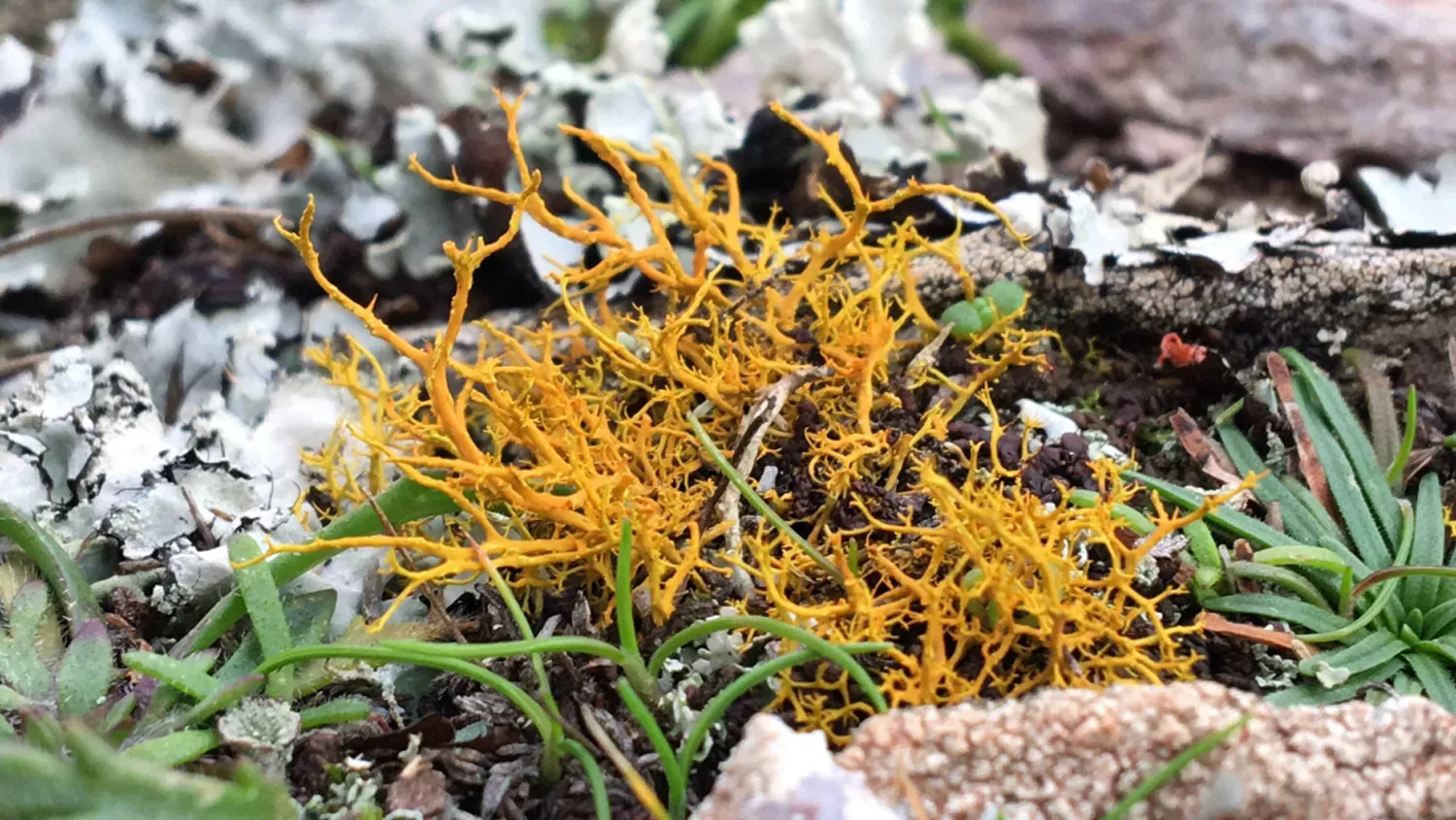
The adventures of Elke Mackenzie
With Schwendener’s dual hypothesis gaining popularity, the early part of the 20th century became an exciting time for lichenology. Exactly when Elke’s story began.
Born in London in 1911, Elke Mackenzie moved with her family to Scotland, and eventually studied botany at the University of Edinburgh.
It was a meeting with Annie Lorrain Smith that set Elke on the path to lichenology. Smith was a pioneering lichenologist who had worked at the Natural History Museum in London, at a time when women couldn’t officially be employed there.
Elke followed in Smith’s footsteps. She became an assistant keeper in lichen collections of the Natural History Museum, where she was fascinated by the little-understood lichens of Antarctica. Bizarrely, it was the Second World War that provided Elke the opportunity to collect specimens for herself.
Operation Tabarin was a top-secret mission in 1943 that dispatched a team of scientists, including Elke, to Antarctic territories in an attempt to sure up British claims of sovereignty in the region.
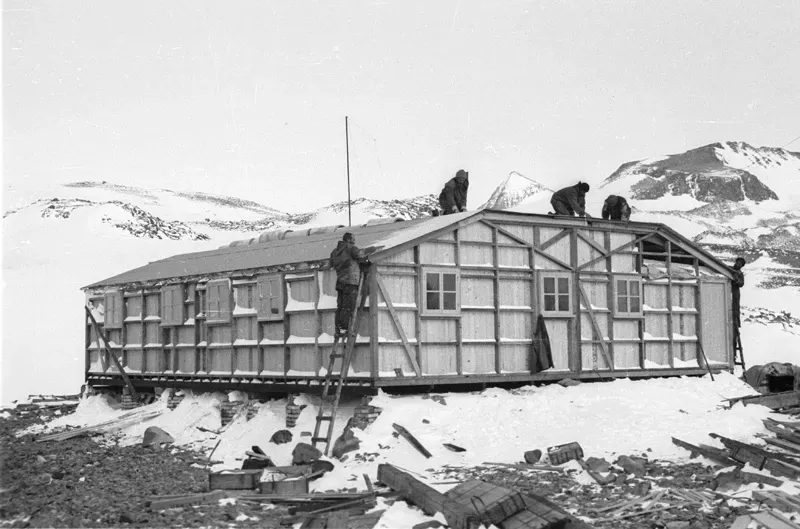
Over the three years she spent in Antarctica, Elke collected nearly 1,000 lichen specimens. Many of these were new to science, including Verrucaria serpuloides, which remains the only known lichen that lives permanently underwater in the ocean.
After the end of her Antarctic expedition, Elke moved between several institutions as a cryptogamic (plants without flowers or seeds) botanist, including the National University of Tucumán in Argentina, and the National Museum of Canada in Ottawa.
In 1953, Elke became the director of the Farlow Herbarium of Cryptogamic Botany at Harvard University, a highly respected role within lichenology.
But she didn’t let her new position stop her from continuing her collection adventures. In 1964, Elke returned to Antarctica to lead a scuba-diving, lichen-hunting expedition that she jokingly referred to as ‘Operation Gooseflesh’.

Leaving a legacy
Throughout the 1960s, Elke struggled with worsening mental health. After separating from her wife, and a brief stay in the university infirmary, Elke consulted with a specialist in New York.
After initially being diagnosed with a voice box disorder, Elke was eventually diagnosed with what we would today recognise as gender dysphoria.
In 1971, Elke legally transitioned from male to female.
According to Laurence Senelick, drama professor and close friend of Elke, Harvard University was ‘appalled’ with her decision, and forced her into early retirement at the age of sixty.
Moving away from America, she retired to Costa Rica. But despite her enforced retirement, Elke tried her best to share her lifelong work on the lichen genus Stereocaulon, publishing an abridged summary of her research in 1977.
After being diagnosed with neurodegenerative disease ALS in 1983, Elke Mackenzie passed away in 1990, aged 78.
In her obituary, Elke was described as ‘a keen collector [and] a sharp observer of lichen habitat,’ who ‘spoke several languages’ and had a ‘gentle manner’.
Almost all of Elke’s work was published under her birth name, not included here out of respect to her. But in one of her final publications, Elke acknowledged herself, with a thanks to ‘Miss Elke Mackenzie for technical and bibliographic assistance in the preparation of this paper.’
In some small way, she wanted to make sure her true identity would always be linked to her work.
Not just during Pride, it's important for us to take the time to shine a light on the hidden heroes of science like Elke Mackenzie, to make sure their stories can continue to be heard and celebrated.
